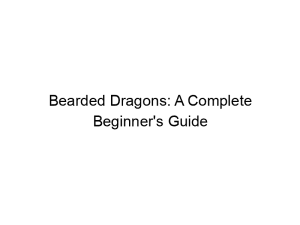Embarking on the journey of pet ownership is a rewarding experience, but it requires dedication and knowledge. If you’re considering adding an amphibian friend to your family, understanding their unique needs is paramount. The Ultimate Guide to Caring for Pet Frogs will equip you with the essential information to provide your frog with a thriving and happy environment. We’ll cover everything from choosing the right species to maintaining a healthy habitat, ensuring your amphibious companion enjoys a long and fulfilling life. This comprehensive guide will cover habitat setup, diet, health, and common frog diseases, helping you become a responsible and informed frog owner.
Before you even think about a terrarium, choosing the right frog species is crucial. Some, like red-eyed tree frogs, are arboreal (tree-dwelling), requiring tall enclosures with plenty of climbing
branches. Others, such as African dwarf frogs, are aquatic and need a substantial water component in their habitat. Research potential species thoroughly. Consider your experience level – beginner-friendly options like White’s tree frogs are more forgiving than demanding species like poison dart frogs.
Popular Frog Species for Beginners
White’s tree frogs, Pacman frogs, and African dwarf frogs are popular choices for beginners. They are relatively hardy and have specific care requirements that are easier to meet. Research the specific needs of each species before making your decision.
Researching Specific Frog Care Requirements
Once you’ve chosen a species, dedicate time to researching its specific needs. Every frog species has unique requirements regarding humidity, temperature, diet, and enclosure size. Websites, books, and online communities dedicated to amphibian care are valuable resources.
Setting Up the Ideal Frog Habitat
Creating the Perfect Terrarium or Aquarium
The size and type of enclosure depend heavily on your frog’s species. Arboreal frogs need tall terrariums with branches, while aquatic frogs need spacious aquariums with appropriate filtration. Always choose an enclosure that is large enough to accommodate your frog’s adult size and allows for ample space to move and explore. Remember, bigger is always better when it comes to frog habitats.
Substrate Selection: Importance and Options
The substrate is the base material of your frog’s enclosure. It should be suitable for the frog’s species, retain moisture appropriately, and be easy to clean. Popular options include coconut fiber, sphagnum moss, and soil mixes, but avoid materials that can be ingested or cause harm to your frog.
Temperature and Humidity Control
Maintaining the correct temperature and humidity is vital for your frog’s health. Use a thermometer and hygrometer to monitor these factors, and adjust heating and humidifying devices as needed. Different species have different requirements, so meticulous research is key.
Lighting and UVB Requirements for Your Frog
Understanding the Need for Specialized Lighting
While frogs don’t require the same intensity of UVB light as reptiles, some species benefit from supplemental UVB lighting, particularly those with more diurnal (daytime) activity. This helps with vitamin D3 synthesis, crucial for calcium absorption and bone health.
Choosing the Right Bulbs and Placement
Choose UVB bulbs specifically designed for amphibians and follow the manufacturer’s instructions for placement and usage. Ensure that the bulbs are the correct wattage for the size of your enclosure and that they don’t overheat the environment.
Avoiding Overexposure and Potential Hazards
Overexposure to UVB light can be harmful, so be mindful of the duration and intensity of the light. Always choose bulbs designed for amphibians to avoid harmful UV wavelengths.
Feeding Your Frog: A Balanced Diet
Understanding Frog Dietary Needs
Frogs are carnivores, with diets varying depending on the species and life stage. Insects such as crickets, mealworms, and dubia roaches are staple foods for many frogs. Dusting insects with calcium and vitamin supplements is essential for optimal health.
Proper Insect Selection and Gut Loading
Gut-loading insects means feeding them nutritious food before offering them to your frog. This enhances the nutritional value of the insects, providing your frog with a more complete and balanced diet. Avoid feeding insects captured in the wild, as they might carry pesticides or parasites.
Feeding Frequency and Portion Control
Adult frogs generally need to be fed every other day or every few days, while younger frogs require more frequent feedings. Overfeeding can lead to obesity and health problems, so monitor your frog’s weight and adjust feeding accordingly.
Maintaining Water Quality for Aquatic Frogs
Importance of Proper Filtration
Aquatic frogs require clean, well-filtered water. A suitable filter system is essential to remove waste products and maintain water quality. Regular water changes are also necessary to prevent the buildup of harmful substances.
Water Parameter Monitoring (pH, Ammonia, Nitrite, Nitrate)
Regularly test the water parameters (pH, ammonia, nitrite, and nitrate levels) to ensure they are within the optimal range for your frog species. Use a reliable water testing kit and adjust accordingly.
Water Change Schedule and Techniques
Water changes should be performed regularly, typically a portion of the water each week. Use dechlorinated water and carefully remove any waste or debris before adding fresh water.
Common Frog Diseases and Their Prevention
Recognizing Symptoms of Illness in Your Frog
Learn to recognize signs of illness, such as lethargy, loss of appetite, skin lesions, or unusual swelling. If you notice any abnormalities, consult a veterinarian specializing in amphibians as soon as possible.
Preventing Disease through Hygiene and Proper Husbandry
Maintain a clean and well-maintained habitat, avoid overcrowding, and practice good hygiene to minimize the risk of disease. Regularly disinfect equipment and avoid introducing potentially contaminated materials into the enclosure.
Treatment Options and Veterinary Care
Treatment options vary depending on the disease, and many require veterinary intervention. Consult a veterinarian experienced in amphibian care for diagnosis and treatment recommendations. Early intervention often improves the chances of successful treatment.
Handling and Interacting with Your Frog
Safe Handling Techniques to Avoid Stress
Handle your frog gently and only when necessary. Support its body and avoid sudden movements. Excessive handling can stress your frog and weaken its immune system. Some frogs are more tolerant of handling than others.
Understanding Frog Behavior and Body Language
Learn to interpret your frog’s body language. Signs of stress include rapid breathing, puffed-up posture, or attempts to escape. Respect your frog’s needs and avoid situations that might cause it undue stress.
Creating an Enriching Environment for Your Frog
Provide an enriching environment with plenty of hiding places, climbing structures (for arboreal frogs), and opportunities for exploration. This will help reduce stress and enhance your frog’s overall well-being.
Breeding Frogs: Considerations and Challenges
Species-Specific Requirements for Breeding
Breeding frogs can be challenging and requires detailed knowledge of the specific species’ breeding requirements. These can vary widely depending on the frog’s origin and environmental needs.
Creating a Suitable Breeding Environment
The environment must mimic the natural breeding conditions, including appropriate temperature, humidity, and water quality. The setup may require a specific setup, like a dedicated breeding tank or terrarium.
Raising Tadpoles and Juvenile Frogs
Raising tadpoles requires a different approach than caring for adult frogs, often involving a separate tank and a specific diet. The transition to a terrestrial environment also requires careful monitoring.
Choosing a Veterinarian Specializing in Amphibians
Finding a Qualified and Experienced Veterinarian
Finding a vet experienced with amphibians is crucial for ensuring your frog receives proper care. Search online directories or contact local wildlife rehabilitation centers for recommendations.
Preparing for a Veterinary Visit
Before visiting the vet, gather information about your frog’s history, symptoms, and diet. Prepare your frog for transport in a secure and appropriately temperature-controlled container.
Understanding the Costs Associated with Veterinary Care
Veterinary care for amphibians can be expensive. Factor this into your budget when planning for frog ownership.
Common Mistakes to Avoid When Caring for Frogs
Overfeeding and its Consequences
Overfeeding is a common mistake leading to obesity and other health problems. Follow the recommended feeding guidelines for your species and monitor your frog’s weight.
Improper Temperature and Humidity Control
Inconsistent temperature and humidity levels can stress your frog and weaken its immune system, making it more susceptible to illness.
Ignoring Warning Signs of Illness
Don’t ignore subtle signs of illness. Early intervention is key to successful treatment. If you notice something amiss, consult a veterinarian immediately.
Long-Term Care and Commitment
Understanding the Lifespan of Different Frog Species
Different frog species have different lifespans. Be prepared for a long-term commitment that could last several years, sometimes a decade or more.
Planning for Vacations and Travel
Plan ahead for vacations and travel. Arrange for a trusted individual to care for your frog while you’re away.
Ensuring the Frog’s Long-Term Well-being
Provide consistent and high-quality care throughout your frog’s life. This includes maintaining a clean and appropriate habitat, providing a balanced diet, and monitoring its health.
Frequently Asked Questions
What are the most important factors to consider before getting a pet frog?
Before getting a pet frog, research different species to find one that matches your experience level and lifestyle. Consider the long-term commitment, the space requirements, and the cost of care, including veterinary expenses.
How often should I clean my frog’s enclosure?
Cleaning frequency depends on the type of enclosure and the frog species. Spot clean daily, removing waste and uneaten food. More thorough cleanings, involving substrate changes and complete enclosure disinfection, should be performed regularly, typically every few weeks or months.
What should I do if my frog seems sick?
If your frog shows signs of illness, such as lethargy, loss of appetite, or skin lesions, consult a veterinarian specializing in amphibians immediately. Describe the symptoms in detail, provide information about the frog’s diet and habitat, and follow the vet’s instructions carefully.
Can I handle my frog frequently?
Handle your frog only when absolutely necessary, as excessive handling can stress the animal. Support its body gently to prevent injury. Some species are more tolerant of handling than others.
What kind of water should I use for my aquatic frog?
Use dechlorinated water for aquatic frogs. Tap water contains chlorine and chloramine, which are harmful to amphibians. Let tap water sit for 24 hours before using it, or use a water conditioner to remove these chemicals.
How do I prevent disease in my frog?
Preventing disease involves maintaining a clean and well-maintained enclosure, avoiding overcrowding, and practicing good hygiene. Quarantine new frogs before introducing them to existing ones.
Final Thoughts
Caring for pet frogs is a rewarding but demanding endeavor. This ultimate guide provides a solid foundation for responsible frog ownership. Remember, thorough research is crucial before bringing a frog into your home. By understanding their specific needs, creating a suitable habitat, providing a balanced diet, and monitoring their health, you can ensure your amphibian companion enjoys a long and fulfilling life. The commitment is significant but the joy of observing these fascinating creatures is unparalleled. Start your research today and embark on this enriching journey of frog ownership responsibly. Don’t forget to consult with a veterinarian specializing in amphibians for any concerns or questions you may have throughout your frog’s life.




